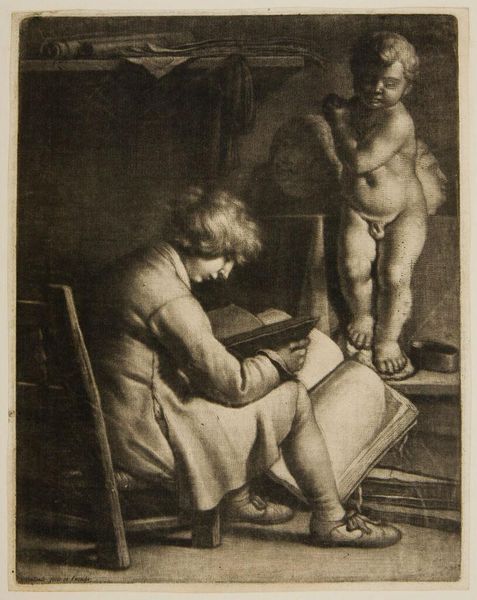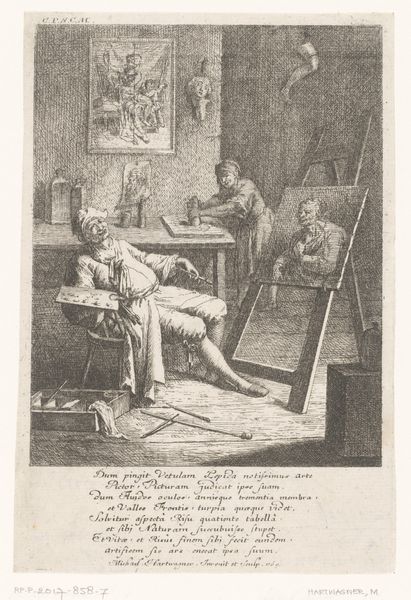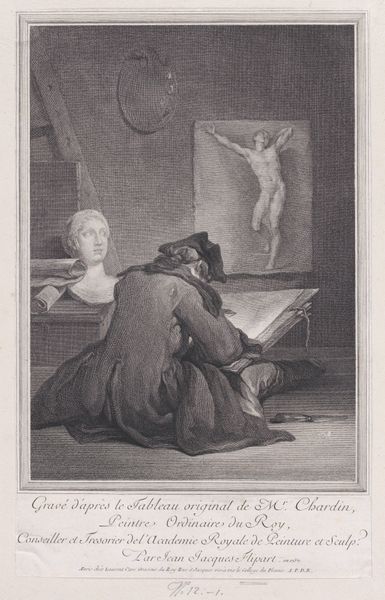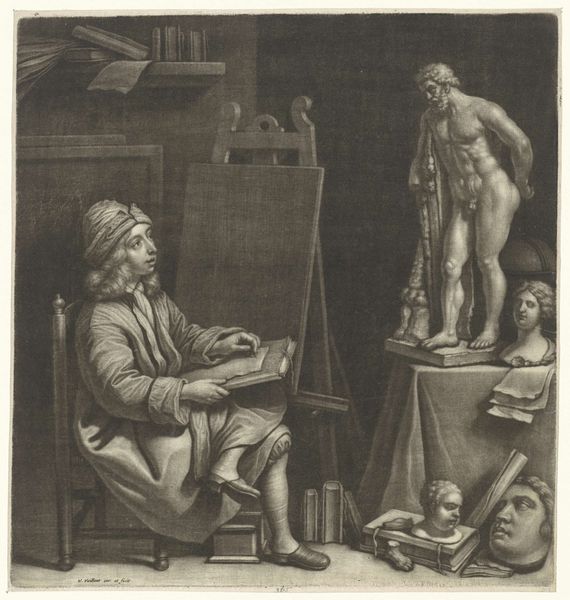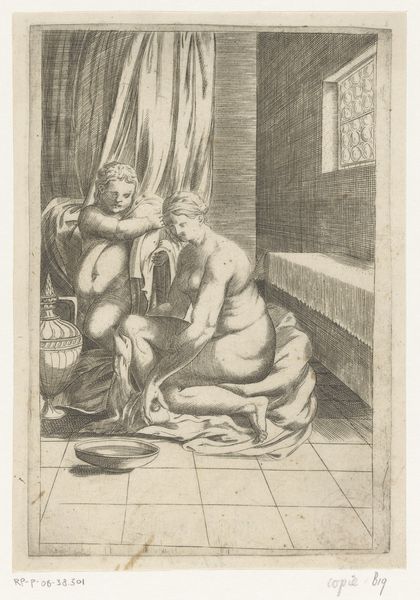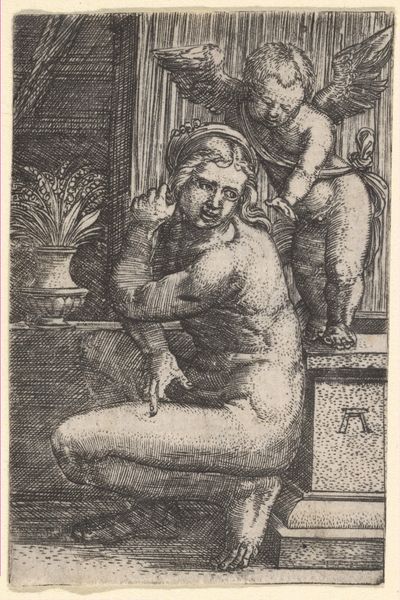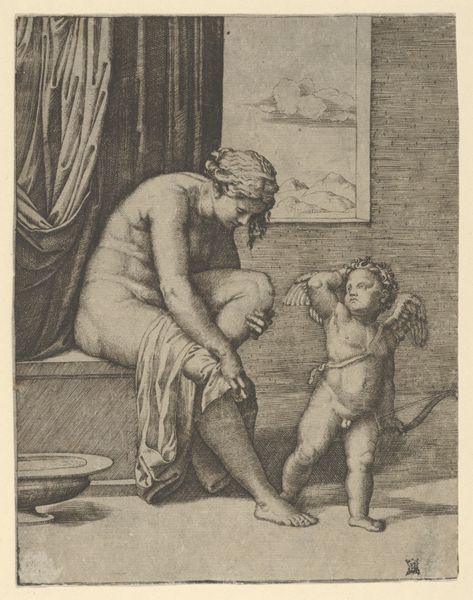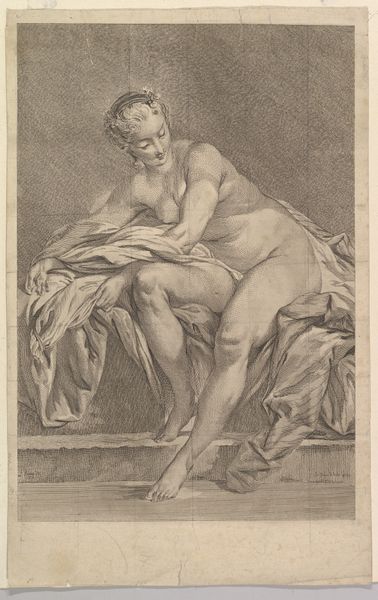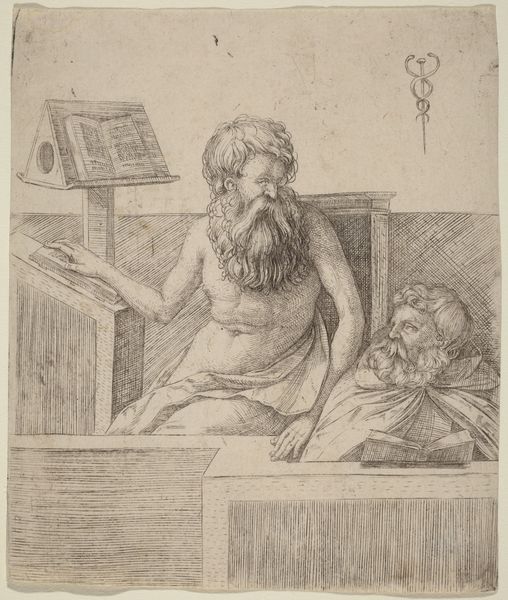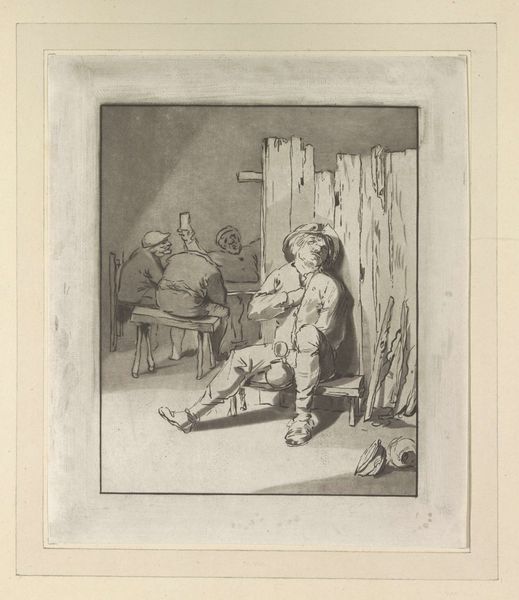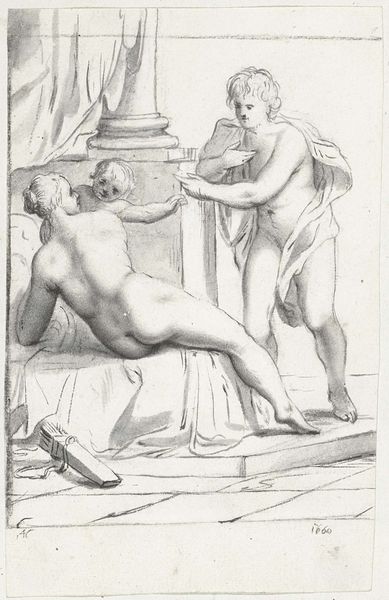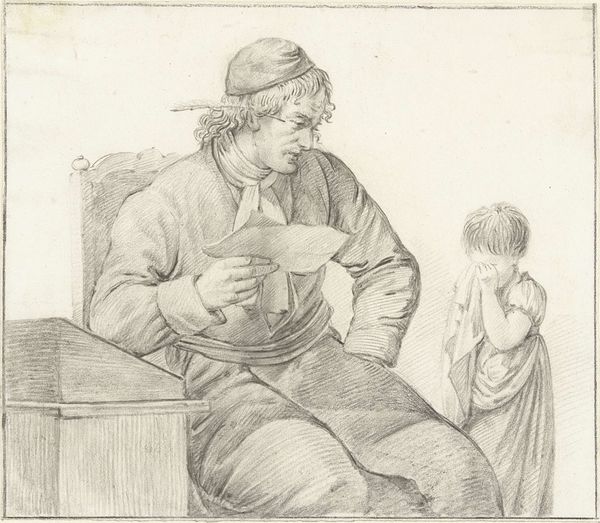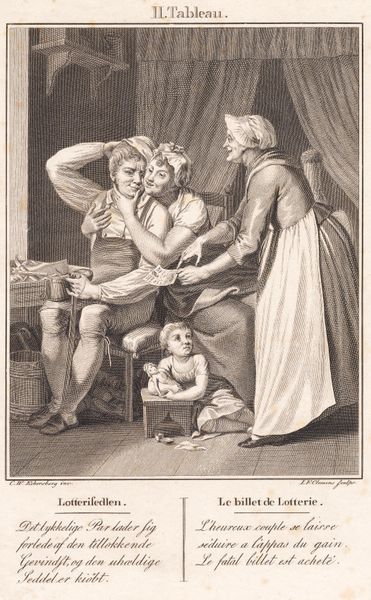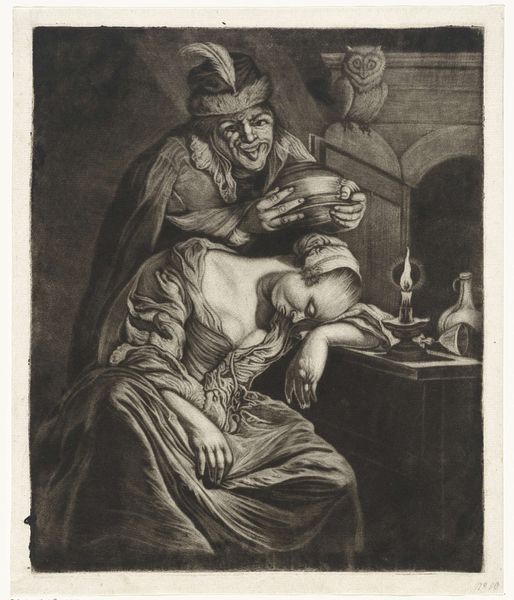
drawing, print, etching, graphite
#
portrait
#
drawing
#
baroque
# print
#
etching
#
charcoal drawing
#
graphite
#
genre-painting
#
charcoal
#
graphite
Dimensions: height 275 mm, width 213 mm
Copyright: Rijks Museum: Open Domain
Curator: Wallerant Vaillant’s “Jongen in een atelier,” dating from around 1650 to 1677. What strikes you first? Editor: The chiaroscuro is remarkable. Look how the artist employs light and shadow to emphasize the contemplative mood and bring depth to the figures. It creates such an interesting interplay between the mundane and the idealized, the mortal and the immortal. Curator: Indeed. Vaillant's use of light structures the composition. The bright figure in the front, reading the open book. And it is echoed by the lighter parts of the sculpture in the background, giving structure and direction to our eye. But why that sculptural addition? It seems strange to include an angelic figure behind what looks to be a model? Editor: Perhaps Vaillant critiques artistic processes. The serene boy immersed in his reading clashes with the backdrop. I am struck by the social implications: does it imply access to art, a sort of elite privilege juxtaposed with an artistic, spiritual experience? Curator: Semiotically, it is a fascinating contradiction. The book is a classic Renaissance trope for humanism and rationalism. But you cannot separate it from that odd baroque sculpting behind the boy’s head, a kind of heavenly vision interfering with reason and individualism. The angel itself stands out as remarkably tactile against the texture of the graphite and etching. Editor: Absolutely. It draws into the Baroque tendency to challenge classical aesthetics in pursuit of heightened emotional impact, and its distribution and printmaking served to engage broader audiences, shaping public perceptions. Curator: I agree. Vaillant, via printmaking, creates an evocative dialogue. Editor: It invites reflection on artistic interpretation and accessibility. Curator: Truly. His strategic contrast elevates discourse above aesthetic convention. Editor: Agreed, a captivating blend of art and broader societal examination.
Comments
No comments
Be the first to comment and join the conversation on the ultimate creative platform.
